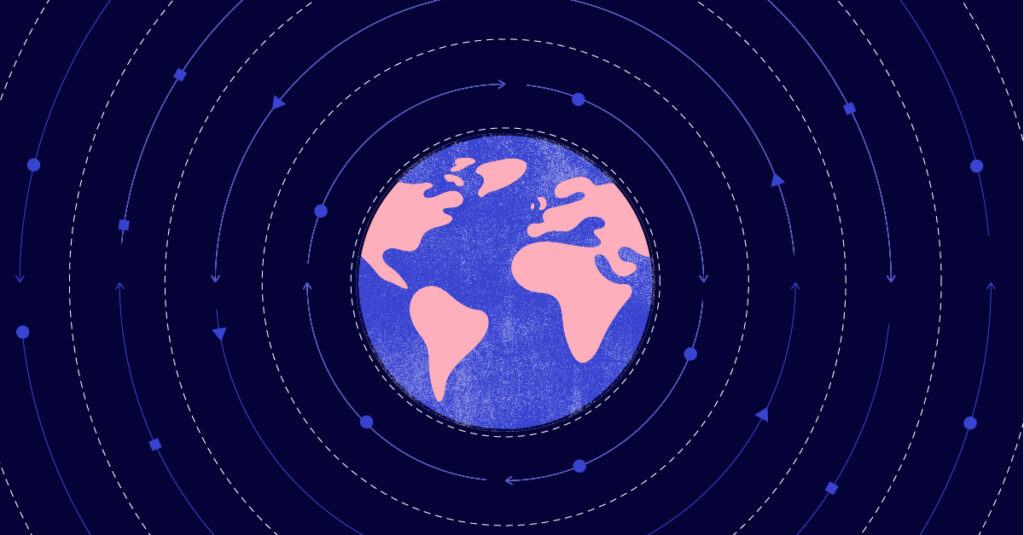In an increasingly global economy, more companies are eager to seize the moment and expand into new markets. Global marketing is taking center stage, leading many brands to compete for consumer attention outside their home base.
Before you step into the fray, you must remember one crucial fact: Your company is local. No matter where you started, everything from your brand’s story to how you talk about your products is bound to the culture in which it was born. Unless you learn how to translate every aspect of your brand into new cultural contexts, you will struggle to globally expand.
Global business history is replete with examples of businesses missing the mark when attempting to translate their messages into a new language. From KFC telling Chinese customers to “eat their fingers off” to Coors translating a slogan into the Spanish slang for having diarrhea, many brands and products have failed to do their homework.
Failure to do so can be costly and time-consuming, and that’s why any brand that wants to make it globally should turn to artificial intelligence (AI) for efficient, accurate translations. The real challenge, however, is finding an AI translation provider that still captures the quality you’d get from human translation.
The Benefits of Spreading Your Message Globally
When done well, global messaging and brand expansion offer a range of benefits. If your brand succeeds at translating globally, it will be able to:
- Tap into a wider audience: It goes without saying that entering a new market allows you to reach customers to whom you didn’t previously have access.
- Gain a competitive advantage: If you’re one of the first companies to offer a product or service in a new market, you may have an immediate advantage over any competitors.
- Grow brand awareness: The more widely you expand, the more customers across the globe will associate your logo, slogans, and colors with your products and services, whether they encounter them on a billboard or social media.
- Build a stronger brand identity and perception: Greater brand awareness has the power to bolster your brand identity, moving consumers beyond mere association with your products toward connection with the values you represent.
- Capture new opportunities to improve its products: Global messaging does more than refine your brand — it provides more feedback loops to help you improve your products as you hear from more customers in more markets
Yet, simply expanding globally is no guarantee that your company will succeed. To truly capture these advantages, you must translate your brand into the language of your new target market.
Barriers to Understanding
Effective translation is easier said than done, though. In your global marketing efforts, you’re bound to encounter many barriers ranging from simple language barriers to dealing with the way your logo or even your brand’s attitude is perceived in a different culture.
The particular nature of your company, its products or services, and the market you’re trying to penetrate all conspire to create the specific barriers you’ll encounter. Detailed market research is essential to set the stage for successfully translating your brand. Once you’ve done your research, however, the work of translation is equally essential.
Building a Consistent Global Message and Brand Using AI Translation
Whatever barriers your brand encounters in a new global market, they all come down to one big factor: trust. If customers aren’t buying, it’s primarily because they don’t trust your brand. In the U.S. and several other countries, nearly half of consumers say they would spend more online with brands they trust. If you don’t get your message across clearly, you’ll never build enough rapport and trust with your new audience.
So, how do you get your message across? Again, you can’t ignore the important step of market research. But, although research will give you a clear idea of what you need to communicate, it won’t help you clearly and quickly translate your message. For that, you need translation systems that offer the benefits of AI technology and human translators.
On the one hand, AI-driven machine translation provides unparalleled speed for converting your message into hundreds of languages. With the powers of machine learning and automation, it’s possible to translate an entire website or library of company manuals into several languages in a matter of seconds.
However, this process is incomplete without human translators in the post-editing process. Effective translation still requires the local knowledge, understanding, and attention to detail that only human eyes can provide, so a system for human review and approval is a critical part of any AI translation model.
The Unbabel Solution: Clear Messaging That Overcomes Cultural Barriers
Getting your message across in a new market is not as simple as plugging your English copy into Google Translate. AI translation technology can accomplish a lot, but it can only go so far. That’s why Unbabel has focused on creating the perfect blend of AI and human translation.
Our AI-driven translation solutions offer robust tools for leveraging the best of both worlds. The Quality Estimation tool, for example, evaluates the effectiveness of any AI translation to determine whether a closer review is necessary to ensure accuracy and local relevance. Meanwhile, our recent acquisition of Bablic demonstrates our commitment to ensuring high-quality website translation with robust SEO capabilities.
These benefits, and many others, come at a fraction of the cost of hiring a full team of human translators — without sacrificing the quality you would get from that investment.
Want to learn more about driving revenue through localized content? Check out our work with Ooni Pizza Ovens.












